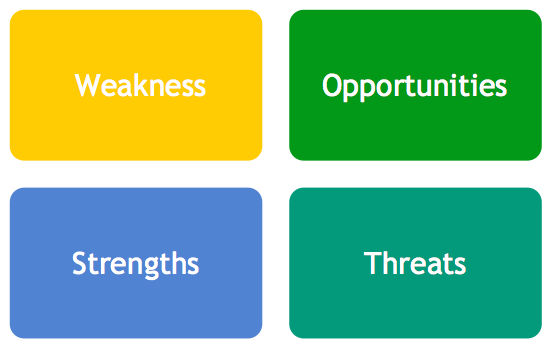Have your employees been pushing away trainings and workshops like a plate of broccoli? Does it give them the symptoms of gastric disorder? Shudders…gas? Give them a break! A break? As an employer, you are exasperated. The last time your team upgraded their skill-box was, when?? You’ve tried inviting gurus and experts, but still see no impact. You even tried a retreat-and-seminar on the latest company product. Fifteen days post the fun getaway, and no one has even mentioned the product in your team. Sounds dismal as a nose-turning meal, repeatedly served at the school cafeteria. We don’t blame the employee reluctance at all. Who reads through a pile of print-outs anyway? Or even sit through linear, monotonous, endless podcasts? With stunning features now available in e-learning materials, we guarantee, your employees will be served a new entre` each time. Something that’s music to ears, appealing to the eyes, and delicious for the brain.
Are you one of the last employers to jump on the e-learning bandwagon? Do you still harbor skepticism on e-learning through a formal learning management system as opposed to traditional pedagogical strategies? Read on to find out how eLearning busts your myths. Consider hiring an E-Learning consultant to convert the bore into the beautiful. Convert text into interactive multimedia. Convert dry and dull company training material into real-life scenario-based case studies. Something that employees want! We are backed by the e-learning magazine: “Consider what matters to your end-users, in addition to your stakeholders. Users are more likely to adopt a system if it is responsive, easy to use, accessible on-demand, and intuitive. Our familiarity with websites we access for personal use can dictate what we expect from the systems we use at work.”
SWOT Analysis to determine if e-learning is for you

Use a SWOT Analysis to determine the need for e-learning in your company
Take it slow and take it easy. Analyze your training and development situation with the aid of the old faithful: the SWOT Analysis. That’s, right folks, a strength, weakness, opportunities and threats analysis still fits into problems of all sizes! Innovating companies do one thing right: they learn constantly. A learning management system that suits your business needs becomes a one-stop shop for all your company learning needs. It’s the ultimate destination, a hangout where employees become learners and mentors. Where learners believe in regular updates to their skill-box and are motivated to try the concepts in their performance context? How do I understand what are the immediate learning and performance needs of my company? Working diligently through this SWOT Analysis will reveal your learning needs, how your employees prefer and where the gaps lie. Simply ask yourself these questions:
- What are your business strategy requirements?
- What technology resources do you have available for learning?
- Are people in your organization ready to adopt e-learning?
- What are your knowledge retention, management and sharing needs?
- What new skills and personnel are needed to run your e-learning show?
Busting all your Myths about E-Learning
As traditionalists in educational strategies, most employers believe in “tangible” learning. Crossing over to e-learning is not easy. They need compelling reasons to invest in e-learning. E-learning integration into a company even feels like a passing fad or a hype that will see more dust than duty!
Myth 1: E-Learning and Job Acceptance Challenge
The latest barrier we over-heard from an acquaintance from Asia, that individuals with degrees earned through e-learning schools do not get priority in hiring. We cannot undermine the technological expertise gained through e-learning courses. The basic requirement of computer proficiency, the need to use collaboration tools, to participate, to upload assignments and conform to training standards – are activities that strengthen technology utilization for performance efficiency. Come to think of it, e-learning schools actually prepare stronger job candidates. According to the Sloan Consortium: As increasing numbers of professionals receive their degrees and professional training on the Internet, employers uncertain of online degrees will need to re-evaluate their position. These programs are coming on strong in the education industry, as technology becomes more sophisticated and the demand grows. In short, online learning is a critical part of the learning strategy.
Myth 2: E-Learning and lack of Instructor-Student bonding
The second barrier is something we hear all the time: instructor and learner bonding. While instructors provide their images and bio-data in the course page, they miss out the same from the learner. Learners do write an introductory email or may say “hi” in the social collaboration section, but it is still 2D. As a manager of your company, create a short video about yourself, complete with your accomplishments, interests and also a few jokes! Share the technical equipment used to create this video, for example, the camera, microphone and the editing software, as a guide for those who want to know. Ask your employees/learners to create a personal video and share on the company e-learning portal/LMS. Isn’t the best way to teach e-learning involve using e-learning tools?
DIY E-Learning Materials
If you, as an employer, have a knack for training, you can begin e-learning development yourself. Watch out for employees who may struggle to accept this strategy. For such skeptics a middle-ground will work: an online academy with regular meetings. A hybrid employee learning platform will encourage them to meet and learn online as well as in the conference room. This will promote the social-constructivist cognitive activities that occur online. The nay-sayers, usually kinesthetic in nature will be able to affirm the e-learning compliment to their learning. Measure your learning and development analytics to ensure learner-centric learning materials. The following 10 points from the eLearning Avenue should help you get started:
- Define and maintain a realistic project scope.
- Define and document the business case needed for training.
- Identify and recruit in-house experts and talented employees to develop and mentor materials with you.
- Identify and recruit external hires to assist in the course development.
- Select the e-learning vendor by talking to other organizations.
- Developing the e-learning course using simple power point or if time permits, learning development tools.
- Test the e-learning course with selected team members.
- Deploy the e-learning course.
- Confirm and manage technical support for e-learning.
- Revise and update the course periodically.
E-Learning is riding a rough wave at the moment. It has its highs and lows. Investing in e-learning consultation and integration can be expensive if not planned carefully. One thing is for sure, e-learning cross-over will make the right company culture and learning difference. Consider the article “The State of E-Learning” by Kevin Kruse as our supporting ally:
“Despite setbacks, organizations like IBM, Cisco, GlaxoSmithKline and the U.S. military have achieved incredible cost savings and increases in productivity through e-learning.”
| Tags: eLearning Myths


